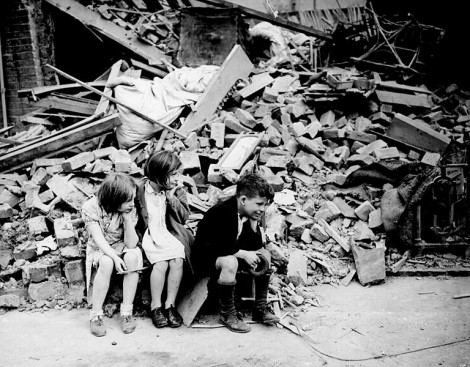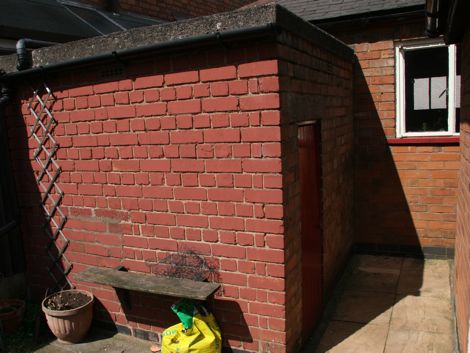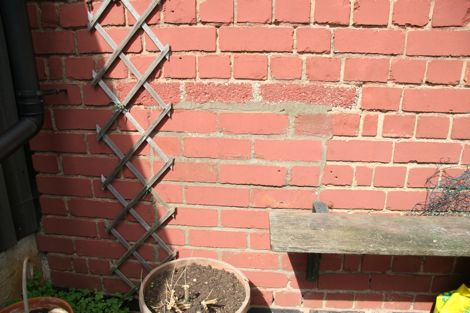Watching the last episode of Tony Robinson’s ‘Blitz Street’ on Channel 4 this week has prompted a few thoughts and surprising memories.

The four-part series revisited the intensive ‘Blitz’ bombing of Britain during the Second World War by recreating a wartime street and subjecting it to progressively larger explosions, simulating the range of bombs and missiles delivered by the Nazis. The real Blitz bombing was focused on London, but also other cities including: Liverpool, Hull, Coventry, and the city where I was later raised – Leicester.
The show was framed as a serious science experiment that would, as well as being entertaining, generate new data for historians. To that end, the houses were wired with pressure sensors to measure the intensity of the blasts, and the associated destruction was captured with high speed photography.
For example, readings taken inside a recreated domestic Anderson Shelter, constructed from corrugated steel and earth, revealed how under certain bombing conditions the pressure wave would be sufficient to kill the occupants, consistent with contemporary reports of whole families being found externally unscathed but dead from internal injuries. Under other conditions, the test explosions suggested that simply hiding under the stairs had offered adequate protection.
Amazingly, a bottle of milk parked outside one of the houses survived the entire simulated campaign, ranging from the explosion of a 50kg High Explosive (HE) bomb, right through to a simulated V2 rocket impact.
Well, what can you say? Great television. And that surviving bottle of milk was a gift to the producers. For sure, some will criticise various points of historic content and scientific accuracy. Viewers have commented on the under-representation of Hull as the second most bombed city after London; and I was bemused at the placement of the V2 simulated charge behind an earth bank that seemed to guarantee it wouldn’t totally obliterate the set. Others might find the whole thing an unnecessary waste of building materials and explosives.
However the popular verdict washes out, I thought the show’s mix of social history with science and technology successfully outweighed any failings. Here we saw one of the more negative applications of science and technology in context: Science Communication, right? But more so, a graphic raising of awareness that war isn’t just something that happens to others on CNN.
Beyond the politically incorrect schoolboy/girl appeal of blowing things up, Blitz Street got me digging deeper into the science behind the show, looking out my old university notes on flow simulation, super-sonic pressure wave propagation and nozzle design (re the V2).
On a completely different tack, the show reminded me of the many happy (formative?) hours I’d spent as a teenager inside an air-raid shelter.
How come? I may be old enough to have benefited from real chemistry sets and the relaxed authority that accommodated them, but I certainly wasn’t around in the Second World War. I did however grow up assuming everyone had a WWII surface air-raid shelter in their back garden, like this one at my parents home in Leicester.

I’ve always known this cube, with its 14 inch thick brick walls and reinforced concrete ceiling as simply ‘The Shelter’.

When the family moved here in the seventies, the interior was still in immediate post-war condition, including wooden bunk supports for two, maybe four max, persons. To protect from lime, the concrete ceiling had been lined with fascinating newspapers of the period, discovered when I converted The Shelter to a photographic darkroom, re-papering it with pages from Amateur Photographer Magazine.
At the age of twelve or so, The Shelter became my first chemistry laboratory. Minimal ventilation via perforated bricks at the top of each thick wall meant that reactions that were exothermic or likely to generate noxious gases were relegated to the annexed greenhouse. For example, anything where chlorine or oxides of nitrogen were produced, or compounds were combined with acids or oxidants; and anything involving organic compounds. All these were better suited to the fume-cupboard environment of the greenhouse.

An interesting design feature in the wall at right-angles to the main entrance, is a sort of escape hatch comprising a two foot square of bricks where the cement has been replaced with plain sand. The idea, I presume, was that if the house got bombed and fell onto the shelter, the occupants, safe inside, could kick out the bricks on the adjacent wall. It’s been mortared up since, but you can still see the outline in the photo. Originally, an iron bar extended out from the hatch that an external rescuer could pull on to release the brickwork.

Now of course I’m keen to know how my Shelter would have fared against Tony Robinson’s bombs – something to be investigated when I find an appropriate (=free) fluid dynamics package.
And from a social history perspective, I’m intrigued as to why the house had it’s own surface air-raid shelter in the first place. A scan of GoogleEarth suggests none of the neighbours have anything similar; and it’s not the sort of structure that could be easily or inexpensively removed. So more research needed there.
The house wasn’t situated next to a munitions factory or similar target; it’s just one house in a row of similar suburban dwellings. Maybe the owner was just nervous enough, and had the cash, to go one better than the standard Anderson shelter. I’ve heard of similar domestic shelters associated with homes where military personnel were billeted. A US Airborne division was stationed in the city, so maybe that’s the reason. Either way, it was more than paranoia. According to The Leicester Chronicler, two hundred and fifty homes in Leicester were completely destroyed by bombing. A map of all bombs dropped on Leicester during WWII is here at Wartimeleicestershire.com.
Anyhow, looks like Channel 4 at least succeeded in inspiring a nostalgic ramble; make of it what you will.